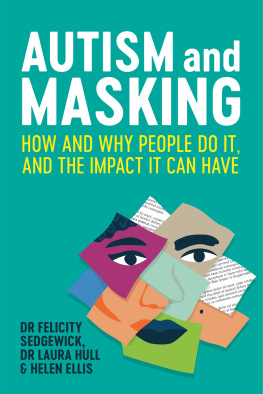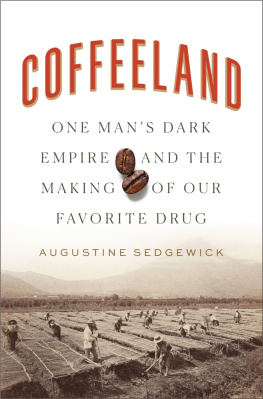Robert Sedgewick - Algorithms in C, Parts 1-4
Here you can read online Robert Sedgewick - Algorithms in C, Parts 1-4 full text of the book (entire story) in english for free. Download pdf and epub, get meaning, cover and reviews about this ebook. year: 1998, publisher: Pearson Education Limited (US titles), genre: Computer. Description of the work, (preface) as well as reviews are available. Best literature library LitArk.com created for fans of good reading and offers a wide selection of genres:
Romance novel
Science fiction
Adventure
Detective
Science
History
Home and family
Prose
Art
Politics
Computer
Non-fiction
Religion
Business
Children
Humor
Choose a favorite category and find really read worthwhile books. Enjoy immersion in the world of imagination, feel the emotions of the characters or learn something new for yourself, make an fascinating discovery.

- Book:Algorithms in C, Parts 1-4
- Author:
- Publisher:Pearson Education Limited (US titles)
- Genre:
- Year:1998
- Rating:3 / 5
- Favourites:Add to favourites
- Your mark:
- 60
- 1
- 2
- 3
- 4
- 5
Algorithms in C, Parts 1-4: summary, description and annotation
We offer to read an annotation, description, summary or preface (depends on what the author of the book "Algorithms in C, Parts 1-4" wrote himself). If you haven't found the necessary information about the book — write in the comments, we will try to find it.
Algorithms in C, Parts 1-4 — read online for free the complete book (whole text) full work
Below is the text of the book, divided by pages. System saving the place of the last page read, allows you to conveniently read the book "Algorithms in C, Parts 1-4" online for free, without having to search again every time where you left off. Put a bookmark, and you can go to the page where you finished reading at any time.
Font size:
Interval:
Bookmark:
ePUB is an open, industry-standard format for eBooks. However, support of ePUB and its many features varies across reading devices and applications. Use your device or app settings to customize the presentation to your liking. Settings that you can customize often include font, font size, single or double column, landscape or portrait mode, and figures that you can click or tap to enlarge. For additional information about the settings and features on your reading device or app, visit the device manufacturers Web site.
Many titles include programming code or configuration examples. To optimize the presentation of these elements, view the eBook in single-column, landscape mode and adjust the font size to the smallest setting. In addition to presenting code and configurations in the reflowable text format, we have included images of the code that mimic the presentation found in the print book; therefore, where the reflowable format may compromise the presentation of the code listing, you will see a Click here to view code image link. Click the link to view the print-fidelity code image. To return to the previous page viewed, click the Back button on your device or app.
THIRD EDITION
PARTS 14
FUNDAMENTALS
DATA STRUCTURES
SORTING
SEARCHING
Robert Sedgewick
Princeton University

An imprint of Addison Wesley Longman, Inc.
Reading, Massachusetts Harlow, England Menlo Park, California
Berkeley, California Don Mills, Ontario Sydney Bonn Amsterdam
Tokyo Mexico City
Publishing Partner: Peter S. Gordon
Associate Editor: Deborah Lafferty
Cover Designer: Andre Kuzniarek
Production Editor: Amy Willcutt
Copy Editor: Lyn Dupre
The programs and applications presented in this book have been included for their instructional value. They have been tested with care, but are not guaranteed for any particular purpose. The publisher neither offers any warranties or representations, nor accepts any liabilities with respect to the programs or applications.
Library of Congress Cataloging-in-Publication Data
Sedgewick, Robert, 1946
Algorithms in C / Robert Sedgewick. 3d ed.
720 p. 24 cm.
Includes bibliographical references and index.
Contents: v. 1, pts. 14. Fundamentals, data structures,
sorting, searching.
ISBN 0-201-31452-5
1. C (Computer program language) 2. Computer algorithms.
I. Title.
QA76.73.C15S43 1998
005.133dc21 97-23418
CIP
Reproduced by Addison-Wesley from camera-ready copy supplied by the author.
Copyright 1998 by Addison-Wesley Publishing Company, Inc.
Reprinted with corrections, January 1999.
All rights reserved. No part of this publication may be reproduced, stored in a retrieval system, or transmitted, in any form or by any means, electronic, mechanical, photocopying, recording, or otherwise, without the prior written permission of the publisher. Printed in the United States of America.
1 2 3 4 5 6 7 8 9 10 CRW 010099897
This book is intended to survey the most important computer algorithms in use today, and to teach fundamental techniques to the growing number of people in need of knowing them. It can be used as a textbook for a second, third, or fourth course in computer science, after students have acquired basic programming skills and familiarity with computer systems, but before they have taken specialized courses in advanced areas of computer science or computer applications. The book also may be useful for self-study or as a reference for people engaged in the development of computer systems or applications programs, since it contains implementations of useful algorithms and detailed information on these algorithms performance characteristics. The broad perspective taken makes the book an appropriate introduction to the field.
I have completely rewritten the text for this new edition, and I have added more than a thousand new exercises, more than a hundred new figures, and dozens of new programs. I have also added detailed commentary on all the figures and programs. This new material provides both coverage of new topics and fuller explanations of many of the classic algorithms. A new emphasis on abstract data types throughout the book makes the programs more broadly useful and relevant in modern object-oriented programming environments. People who have read old editions of the book will find a wealth of new information throughout; all readers will find a wealth of pedagogical material that provides effective access to essential concepts.
Due to the large amount of new material, we have split the new edition into two volumes (each about the size of the old edition) of which this is the first. This volume covers fundamental concepts, data structures, sorting algorithms, and searching algorithms; the second volume covers advanced algorithms and applications, building on the basic abstractions and methods developed here. Nearly all the material on fundamentals and data structures in this edition is new.
This book is not just for programmers and computer-science students. Nearly everyone who uses a computer wants it to run faster or to solve larger problems. The algorithms in this book represent a body of knowledge developed over the last 50 years that has become indispensible in the efficient use of the computer, for a broad variety of applications. From N-body simulation problems in physics to genetic-sequencing problems in molecular biology, the basic methods described here have become essential in scientific research; and from database systems to Internet search engines, they have become essential parts of modern software systems. As the scope of computer applications becomes more widespread, so grows the impact of many of the basic methods covered here. The goal of this book is to serve as a resource for students and professionals interested in knowing and making intelligent use of these fundamental algorithms as basic tools for whatever computer application they might undertake.
The book contains 16 chapters grouped into four major parts: fundamentals, data structures, sorting, and searching. The descriptions here are intended to give readers an understanding of the basic properties of as broad a range of fundamental algorithms as possible. Ingenious methods ranging from binomial queues to patricia tries are described, all related to basic paradigms at the heart of computer science. The second volume consists of four additional parts that cover strings, geometry, graphs, and advanced topics. My primary goal in developing these books has been to bring together the fundamental methods from these diverse areas, to provide access to the best methods known for solving problems by computer.
You will most appreciate the material in this book if you have had one or two previous courses in computer science or have had equivalent programming experience: one course in programming in a high-level language such as C, Java, or C++, and perhaps another course that teaches fundamental concepts of programming systems. This book is thus intended for anyone conversant with a modern programming language and with the basic features of modern computer systems. References that might help to fill in gaps in your background are suggested in the text.
Most of the mathematical material supporting the analytic results is self-contained (or is labeled as beyond the scope of this book), so little specific preparation in mathematics is required for the bulk of the book, although mathematical maturity is definitely helpful.
Font size:
Interval:
Bookmark:
Similar books «Algorithms in C, Parts 1-4»
Look at similar books to Algorithms in C, Parts 1-4. We have selected literature similar in name and meaning in the hope of providing readers with more options to find new, interesting, not yet read works.
Discussion, reviews of the book Algorithms in C, Parts 1-4 and just readers' own opinions. Leave your comments, write what you think about the work, its meaning or the main characters. Specify what exactly you liked and what you didn't like, and why you think so.


